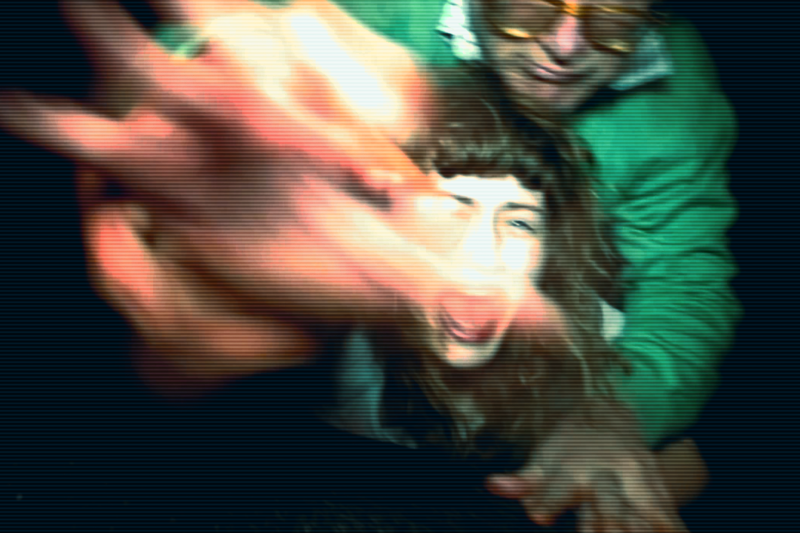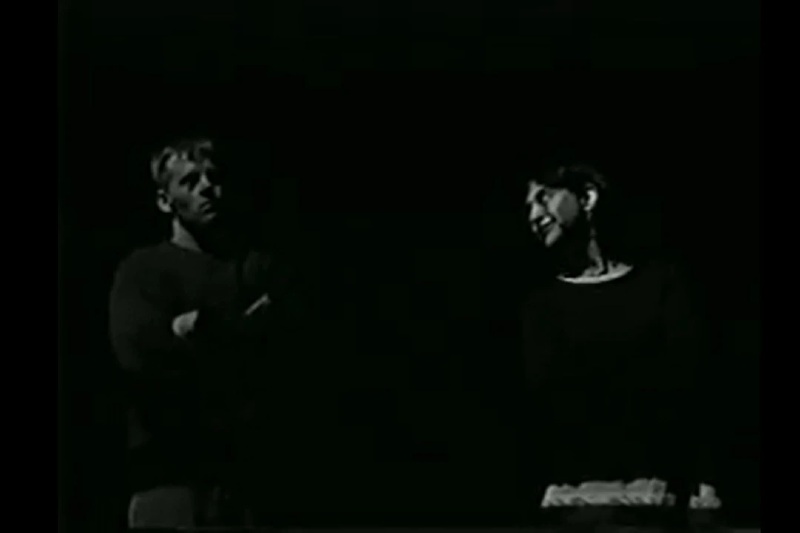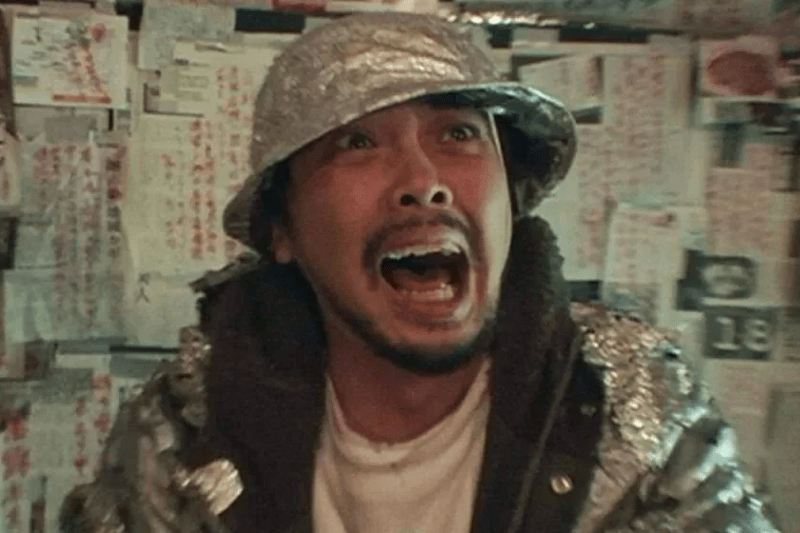Cults, rituals, and paganism are well-known in the world of horror, especially in the folk horror subgenre which includes films such as The Wicker Man, Midsommar, and The VVitch. With a combination of bewitching visuals and a violently unwavering dedication to Pagan gods, these films are aesthetically and narratively rich. But there is a piece of folk horror, Paul McGhie's Webcast, that doesn’t conform to typical expectations of flower crowns and elaborately staged rituals.
Webcast is a movie unlike any other, a folk horror movie combined with found footage. This is a description that should make any horror fan’s mouth water. With the familiar tropes of folk horror and the intimate aesthetic of found footage, McGhie creates a creepy, underappreciated, and effective gem.
Setting the Stage
Student filmmaker Chloe Webber (Samantha Redford) is working on a documentary with her soon-to-be boyfriend Ed (Joseph Tremain). She has become obsessed with trying to solve the mystery of her aunt Amelia’s disappearance 30 years ago. As she interviews neighbors and digs through photo albums, Chloe is determined to make sense of Amelia vanishing without a trace. However, as they dig deeper, they begin to realize something sinister is happening in this small British village.
Chloe claims her kindly old neighbors hide a secret that involves naked rituals and special apples. As is customary in found footage, the camera keeps rolling to prove Chloe and Ed’s seemingly ridiculous claims while they document the conspiracy that has plagued the village for decades.
As a horror movie, Webcast makes sure to include a few folk horror staples that mark its inclusion in the subgenre, such as women buried alive as part of some kind of ritual and giant flower masks that signify the group’s dedication to nature. What sets it apart from other comparable subgenre titles is its first-person perspective and deeply personal story that is able to capture the slowly growing madness caused by a cult’s gaslighting.
Technology as Metaphor
The personal aspects of Webcast come from its portrayal of the intersection of generations through technology. This isn’t just about Chloe and Ed using the latest DSLRs. Their modern filming techniques are placed in direct contrast with an old projector and a Super 8mm camera. This outdated and grainy footage is able to capture the past and reveal truths that Chloe and Ed could not previously access, particularly Amelia’s final moments filmed by the cult.
In this way, Webcast becomes meta as we watch a found-footage horror film about two people finding footage. They act as an audience proxy as their reactions to what they discover dictate the expected emotional reaction to each new clue. This intertwining of old and new recording devices adds another layer of complexity to both film and the preconceived notions about found footage.
The use of older technologies also addresses a desperate clinging to the past and an inability to move beyond tragedy. Chloe stays in her aunt Amelia’s old room, which has gone unchanged for 30 years. All of her belongings remain on her dresser, her bed is impeccably made, and her clothes still hang in the closet.
Her Camera, Her Prison
The room is a tomb that marks the family’s reluctance to move forward over the last 30 years. Only through Chloe’s interviews and persistent questioning is any part of the past dissected and processed; trauma would rather be ignored and locked away than discussed among friends and family.
Tragedy is not just found in Amelia’s disappearance. Chloe is wracked with guilt after a vicious attack on her grandfather has left him in a vegetative state. Her desire to film a drug deal nearly kills him and she processes that trauma through the camera lens. Creating this documentary is her coping mechanism, an attempt to make something better for her family.
She believes she is able to control her story if she views it from behind a screen; she can distance herself from reality while also becoming obsessed with her subject. Using the found footage aesthetic, Webcast is able to dig deeper into the undercurrent of trauma often seen in folk horror films such as The Ritual and Hagazussa.
A Cult for All Seasons
Compared to other horror movies, Webcast is a slow burn, yet it is still full of extremely disarming moments that dangle the carrot of mystery in front of you. While the truly creepy aspects are brought in towards the end of the film, Webcast never fails to deliver unsettling moments that keep you engaged and invested in Chloe’s investigation.
Right at the film’s beginning, Chloe and Ed unexpectedly encounter a young woman screaming and running out of a neighbor’s house. Previously, the film has seemed to be a rather run-of-the-mill amateur true crime investigation that is often seen on YouTube and heard on podcasts. Her pale figure emerges from the darkness, a shocking image that marks a crucial shift in Webcast and indicates something deeply sinister and wrong.
From here, these disarming moments only multiply as Chloe and Ed learn more about the cult. In one of the most unsettling scenes, the pair walk into the woods that they believe Ameila often visited. As they pass through the trees, they start hearing something which builds to a disembodied cacophony of screams and howls.
This moment is reminiscent of found footage classic The Blair Witch Project as invisible forces attack the group’s tent and young children are heard laughing. Both films weaponize the vastness and fear of the woods and personify it into immediate and supernatural danger.
The Horror of Helplessness
Webcast does not rely on jump scares or excessive night vision to play up its fright factor. Instead, its use of body horror through a first-person perspective amplifies the physical toll the film is taking on Chloe.
Despite a low budget, practical effects are used sparingly to add in sprinkles of body horror. As they get closer to the truth, Chloe begins to puke up dozens of cigarette butts and boils cover her skin. These scenes are small but extremely effective in playing up the dangers and power of the cult.
This is a cinematic journey that’s amazing on the first watch and even more complex on subsequent viewings. You connect the dots and realize the inevitability of this entire film, not unlike Kill List and Hereditary. Each of Chloe’s actions is predicted and intercepted by the cult as they work to make her seem crazy and dispose of her entirely.
Just when Chloe and Ed feel like they’ve somehow figured out the mystery, they hit a brick wall erected by the cult. Even when they discover the truth, it is already too late. Webcast is a movie steeped in helplessness as you want to scream at Chloe and Ed to run away.
Conclusion
Admittedly, this is an easy film to scroll past on Amazon Prime, the only platform where Webcast is available. From a title that seems to reference screen life horror to a poster that features a twisted screaming face, Webcast’s movie marketing does a great film a huge disservice. Its promotional appearance conveys a generic found footage title when in reality, this is something that has really never been done before.
Paul McGhie caters to the lovers of folk horror and proves the creative possibilities within found footage stylings. As Halloween peers over the horizon, Webcast should be on the top of your October watchlist.







